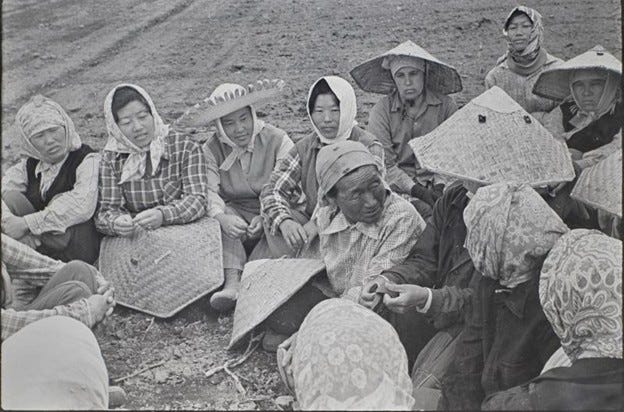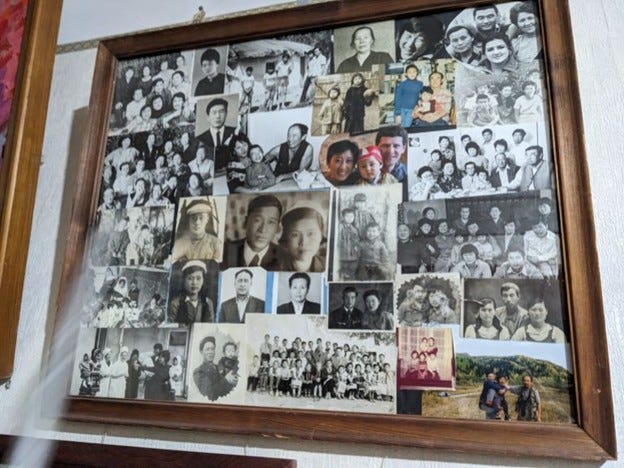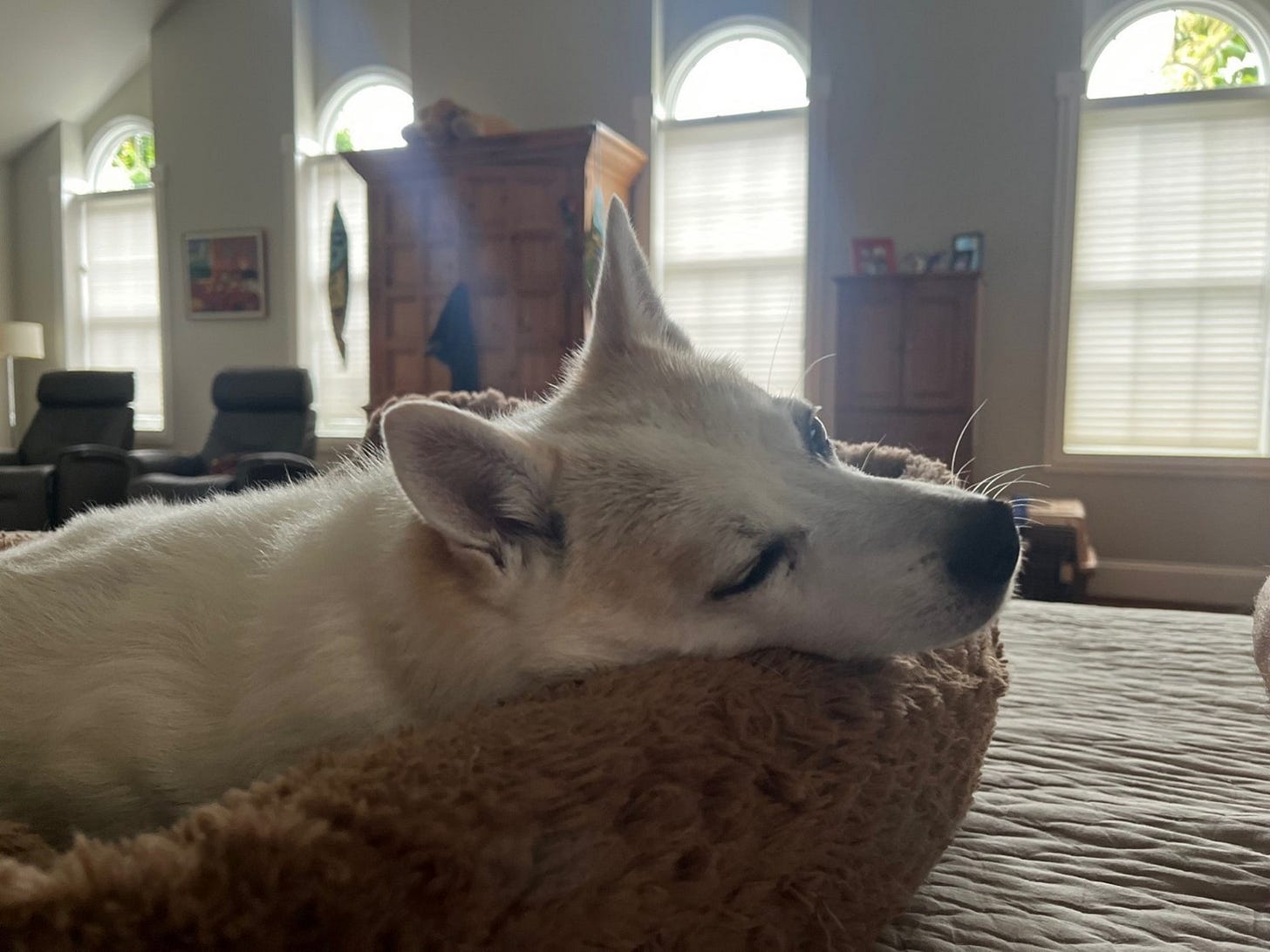There weren’t many Asians on American television in the 1970s. You saw them mostly in newcasts about the Vietnam War, in bit parts in the Korean-War comedy M*A*S*H, or, later in the decade, in reports about how Japanese imports were putting Chrysler, Ford, and GM out of business. There were some recurring Asian characters on mainstream television, such as George Takei on Star Trek or Miyoshi Umeki on The Courtship of Eddie’s Father, but these were supporting roles. The lead character in the western Kung Fu was supposedly half-Chinese, but he was played by white actor David Carradine.
There weren’t many Asian-Americans in the Ann Arbor of my youth, either. One of the few interracial couples – an Anglo dad and an Asian mother - had the fastest boy in my neighborhood. There were also Asian kids on my high school tennis team and in the AP classes that I struggled through in high school. These kids were almost entirely of Japanese or Chinese background. My adult life has been pleasantly larded with Korean-Americans, but there were almost none of them in the Ann Arbor of the 1970s.
The paucity of Asians in my youth is less surprising when you consider that Asian-Americans’ share of the U.S. population grew from 0.5 percent in 1960 to 7.5 percent today. The mid-1960s changes to American immigration law greatly expanded legal immigration and removed prior laws’ preferences for immigrants from Europe. Yet the growth in the numbers of Asian Americans was, in the mid-1970s, still mostly in the future.
Novelty was therefore one of the reasons that I was so captivated by Nellie Kim, a gymnast for the Soviet Olympic team in 1976. Nellie was very talented, winning a total of six gold medals, and my 14-year-old self thought she was very pretty. Nellie Kim didn’t look like the other members of the Russian Olympic teams – people like fellow gymnast Olga Korbut or sprinter Valery Borzov. Those people fit my notion of what a Russian should look like, and Nellie Kim did not. There were obviously things that I did not understand about the peoples and history of the USSR and, given Nellie’s last name, it was obvious that I didn’t know much about Korea, either.
Korea was highly undeveloped until very recently and most people were either serfs or slaves. Indeed, Korea has one of the most long-lasting and consistent cultures of slavery in the entire world. That poverty meant that Korea was bullied by its much bigger neighbors – Japan, China, and Russia – as each sought to build out their own empires.
The poor political and economic conditions meant that many Koreans emigrated in the decades surrounding 1900, most often to one of those bullying neighbors. Some emigrated to Japan (under very difficult conditions evident in the AppleTV series Pachinko), some moved to China’s northeastern province of Manchuria, and some moved to the Russian Far East, i.e., the province surrounding modern Vladivostok that faces the Sea of Japan. Nothing tells you more about Korea’s poverty circa 1900 than that so many Koreans left for such unappealing destinations.
It’s amazing that the Russian Far East (RFE) even exists, as Vladivostok is nearly 6,000 miles east of Moscow, about twice the distance between Boston and Los Angeles. Yet Tsarist Russia had spent the prior 300 years building out an empire that, at its peak in the mid-1800s, was easily the largest empire of all time. That empire extended from its western borders with Sweden, Poland and Germany all the way, via Alaska, to a border with modern Canada. There’s even a Russian River in California and you can still see a Russian colonial church just 80 miles north of San Franciso.
Russia’s land grab brought non-Russians like Georgians, Uzbeks, and Mongols, many of them nomads, into the Russian empire. (In this sense, Russia’s eastward expansion resembled the European occupation of North America.) Tsarist Russia hoped that “real” Russians would soon form a majority in its new possessions and so many European subjects were paid to move east. Other Europeans were involuntarily exiled to Siberia or the RFE, a precursor to the USSR’s Gulag Archipelago.
Korean peasants began to move into the RFE in the last decades of the 19th century, not long after the founding of Vladivostok. It was a short move, just across the Tumen River, though migrants ran the risk of getting shot by both Korean and Russian border patrols. These migrants looked for better farmland and governance that, while imperfect, was much better than what they had in Korea at the time. Koreans thrived in the RFE, and so they were followed by tens of thousands of fellow migrants in the first decades of the 20th century.
Tsarist Russia was happy to accept the Koreans’ tax receipts, but the regime always had a love-hate relationship with their Korean immigrants. The anxiety arose because Russia was at odds with the newly powerful Japanese empire and because Russians tended to lump Koreans and Japanese into an all-encompassing “Asian” category. Korean-Russians were generally left alone, but they were viewed as potential enemies during times of stress, such as during the Russo-Japanese War of 1904-1905.
WWI made things worse for many minorities within Tsarist Russia. “Russians” with connections to Poland, Germany, and Greece – many of whom spoke only Russian – were deported to Siberia en masse during the first years of WWI. Many Russian Jews were also sent to Siberia during this time. As you can see from the picture below, the travel accommodations were not elegant.
Russia’s involvement in WWI ended with Lenin’s October 1917 revolution, but many foreign powers intervened on the side of the non-Communists in the ensuing civil war. Foreigners roaming Siberia included Brits, Americans and even Czechs, but it was Japan who sent the biggest army to Siberia. Japan’s intervention in the Russian Civil War arose partly because it was anti-communist, like the other countries, but also because it wanted to incorporate the RFE into its own empire.
This all put the Korean-Russians of the RFE in an awkward position in the years surrounding 1920. Many Korean-Russians viewed themselves as primarily Russian and fought on the side of Lenin’s army against the Japanese. Yet other Koreans - typically from Korea itself or ethnic Koreans who had immigrated to Japan - fought for Japan in its war against the Reds. The end result was that the Russians and the Japanese both suspected that their Koreans were in league with the other side.
The Russians ultimately repelled the Japanese and reestablished its pre-WWI boundaries, but only after relocating several thousand Korean-Russians thousands of miles to Kazakhstan. It was similar to the camps that America set up for its Japanese minority during WWII, but the Korean-Russians never got to go home.
Lenin reached a rapprochement with Japan after the latter’s withdrawal from the RFE in 1923, even allowing the Japanese to fish in Russian waters and to mine on Sakhalin Island. Partially as a result, Koreans continued to migrate to the RFE, both to gain better economic opportunities and to escape Japan’s oppressive colonial regime in Korea. Koreans’ life in the RFE was still cold and poor, but the ensuing peace meant that they were once again welcomed by the Russians.
Things changed yet again when Japan allied itself with Nazi Germany in 1937. Being sandwiched between two hyperaggressive enemies stoked Stalin’s paranoia – always near full boil - and led to the Great Terror of 1937-38. The Terror killed hundreds of thousands of Russian apparatchiks but, in Tsarist fashion, Stalin’s fears also meant trouble for Russia’s minorities.
Stalin deported hundreds of thousands of Korean RFE residents to central Asia in the late 1930s. Stalin forced similar moves on Japanese and Chinese living in the RFE and also on ethnic Germans, Poles, and Lithuanians, over a million of whom were moved to Siberia between 1937 and 1941. Thousands of people died on their journeys and very few ever returned. Korea was no threat to Russia but, when stressed, Stalin viewed all East Asians as an undifferentiated threat. You can see some of the Korean deportees in their new fields in the picture below.
In the 1990s American author Jon K. Chang interviewed many of the then-elderly “Russian Koreans” for his book Burnt by the Sun: The Koreans of the Russian Far East. Their stories of pain and adaptation – nearly 60 years on at the time of Chang’s interviews – are familiar from other stories of forced migration. There is also the particular pain of people – like Japanese Americans during WWII - who thought of themselves as fully adapted to their new land but who were rejected in a time of war.
Konstantin Kim reported that “we lived like savages” in his family’s first year in Uzbekistan and that his family lived in “one room for ten people” and that “we cooked outside.”
Kim Chan Nim reported that “we didn’t have a desire to live in Korea or to move to Korea” and Viktor Li noted that “there was nothing to return (to Korea) for” and that “we left there originally because there were no crops and people were starving.”
Maia Kim told Chang that her parents would not have wanted to return to Korea, as they considered the RFE their home.
Life in Uzbekistan ultimately settled down for the Koreans, sometimes over the course of several generations, and some of them developed a new hybrid identity. Another of Chang’s interviewees, for example, said that “we are Uzbek Koreans” and that “we are proud to have lived in the USSR.” You can see below the photo board of an elderly Uzbek Korean and, if you look closely, you can see evidence of some intermarriage between the Koreans and other ethnic groups.
Other Korean-Uzbeks complain of anti-Korean bias within Uzbekistan. Nikolay Shegay, for example, recounted to journalist Emanuel Hahn that he was harassed for being Korean and that his family acquired guns to protect themselves. Other Korean-Uzbek’s moved to Russia after the dissolution of the Soviet Union, but life was often no better there.
So how did Nellie Kim end up on the Soviet Olympic team? Nelly was born in 1957 to a Korean father born in the RFE whose family had been relocated to Tajikhstan in the late 1930s. Nelly’s mother was a Russian Tatar, an ethnic group that speaks a Turkic language and whose population straddles many of the “Stans” of central Asia. She grew up in Chimkent, Tajikhstan, near the border with modern Uzbekistan. She was identified as a good athlete at a young age and, like many Olympic stars, was brought up in Soviet gymnastics culture.
The two most famous eastern European gymnastic stars of the period – Russia’s Olga Korbut and Romania’s Nadia Comaneci – both live in the United States, but Nellie Kim chose to take Belarussian citizenship after the fall of the Soviet Union. She was for many years a prominent judge and was at times accused of favoring American gymnasts over Russians, a charge that she denied. She has since devoted her time to providing standards and training to gymnastics judges in an effort to make scoring more predictable and less subjective. I do not know where Nellie Kim lives today, but her sister (below) definitely trains gymnasts in Minneapolis.
A significant number of Korean Uzbeks have re-migrated to the United States, including Lilia Tyan (pictured below). Tyan opened Brooklyn’s Café Lily in 2012 and it specializes in Korean-Uzbek cuisine, which one review describes as being “less spicy” and “more pickled” than standard Korean food. Tyan says that “we look Korean but we took some Uzbek culture” on her voyage to Brooklyn.
The path from Korea to the RFE to Uzbekistan to Brooklyn was long and difficult, but most of today’s Korean-Americans came to the United States on much easier terms. Our old dog Joey died in 2017 and my children were excited a few weeks later when they found a rescue dog online that looked like a blonder, younger version of Joey. He looks great, I said, but he’s in Korea.
And yet here he is today. Beau was rescued by the women of Donghae Paws who place Korean dogs into homes in the DC area. Beau was rescued by the Korean arm of this organization, placed in the hold of a Korean Air flight that flew direct from Seoul to Dulles Airport, and then delivered to us in the airport parking lot by the Korean immigrants who operate the American arm of Donghae Paws. There are more deer and squirrels than he would prefer, but I think the move has worked out pretty well for Beau….even if his psychiatrist does yell at him for getting on her bed.











Beautiful, as always, Will. Funny thing, having grown up in Montgomery County, where we had a considerable Korean-American community, as you note, still exists. We also had a large SE Asian community, so I was a pre-teen being taken by the family to eat Thai food long before it became better known. Choo Chee Vegetables was an early favorite dish, and Bethesda was the epicenter. There was no greater pride among the MoCo Upper-Middle class than to discover a “hole in the wall” Thai restaurant, or for the truly avant-garde, Vietnamese “hole in the wall.” Then, when these run down, proverbial diamonds in the rough would graduate to a 2.0 version of themselves, if you will, on Rockville Pike, those sophisticated enough to have been familiar with the first iteration could be said to have earned bragging rights.
Thanks for this stroll down memory lane! Next, Will, I’m going to call you and explain the whole narrative all over again… except this time regarding the evolution of Ethiopian food in Adams-Morgan.
Wow, this piece has everything! Heartwarming, funny, bittersweet, historical, and also timely. Migration, immigration, assimilation, brings out the noblest elements of human spirit, at the same time as it can engender hatred snd cruelty in others.
One of the most bittersweet and also triumphant aspects is how immigrants marry into, are born into, and adopt and are proud of their new culture, while also being rejected by it at times. An extreme example was Japanese internment during ww2, while Japanese ameircan soldiers were among the bravest battalions on Europe's fronts.
Beautiful stuff!